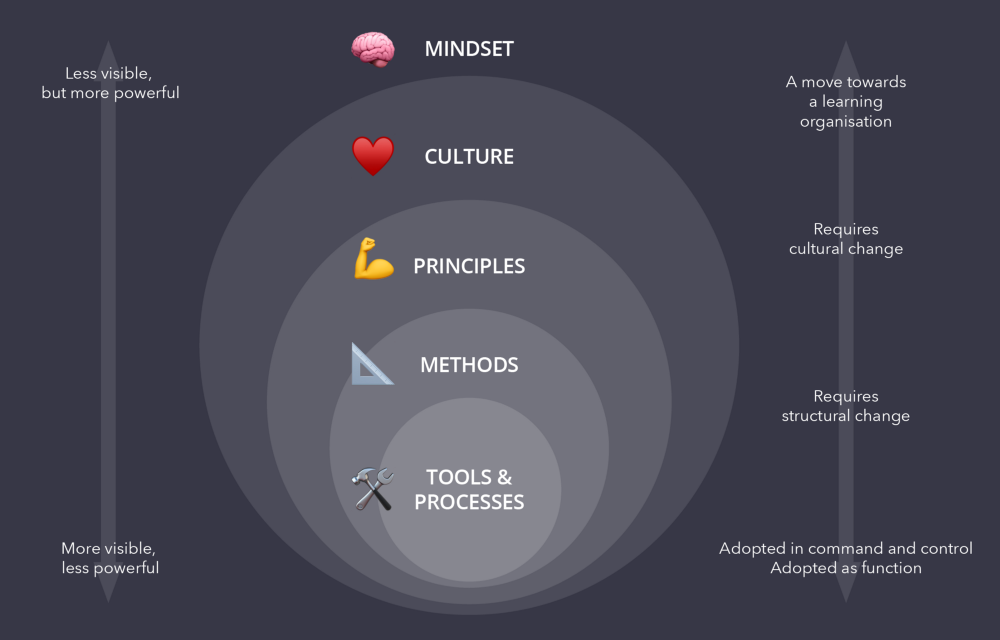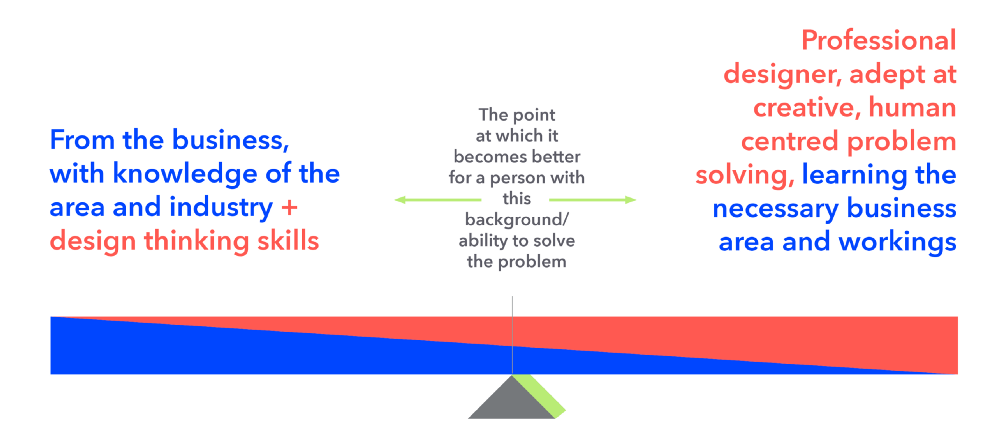We hear a lot about Design Thinking, Strategic Design and Service Design. I’m not going to go into the potential danger that this democratisation of design is bringing to the wider Design industry — I cover it in a couple of my other blogs ‘Design thinking isn’t design, it’s design thinking’ and ‘Dangerous times in Design’.
The (difficult) question I’m going to ask here is;
Who are the people best placed to do strategic & service design work?
Now, on pure face value, literally reading as a label, the word ‘Design’ is in the title, so Designers would be the natural answer, yes? Well kind of.
If you dig deeper into design thinking; and take it as ‘a human centered approach to solving problems, for business, organisations, governments etc’, then quite rightly we should ask; would it not be the case that anyone could potentially do this? Similarly, could they not take this lens and combine it with certain ways of workings and some straight forward tools, to define and design services? Yes they could…
After all, we’re not talking about the raw craft, aesthetic intuition or functional ability, associated with ‘real’* design which requires a specific inherent ability (or at least passion) and a long learned and earned mastery… this is ‘just’ about thinking in a certain way.
So the answer here is that potentially anyone,could do strategic/service design. (*I’m sailing close to wind on this)
Now it gets really interesting. We now have the options/answers of either ‘designers’ or ‘anyone’… but there is course an option C; both. Which I think it is, but it is more nuanced than that, and here is where my Tipping Point model — a sliding scale with an inflection point — comes in.

When a Designer, who in theory, is more likely (I am not saying always or absolutely) to be a better critical, creative, and human centered thinker comes to solve a problem, they need to get familiar with that subject matter and area of expertise on which to apply his or her skill. This takes time, research and interest to get the base knowledge; and let’s face it, it is unlikely the designer will be able to understand the subject area (within the project lifespan) to as great a depth as someone working in that area day in and day out, perhaps for a long period of time. But in theory, they can absorb enough (researching others, macro trends etc.) and solve…
Now let’s come from the other side. We have e.g. someone that is the SME in the business area, a generalist management consultant, or perhaps a Product Owner/Product Manager tasked with creating a product to solve a problem. They have the inherent knowledge of the business or a wider skillset but they’ve just never had the training or experience of using a design thinking lens to tackle their challenge. So, and I simplify greatly, there are a bunch of tools, and exercises, that strategic and service designers use e.g. personas, blueprints, empathy maps etc. whose theory and use can be taught relatively easily. So bam, all of these generalists/other professionals can be ‘designers’ (!) and hence solve the challenge… well, no, not really either!
Let me set this stall out first — Just the act of knowing how to do, use and complete, a set of strategic design tools DOES NOT make them a designer and also, it DOES NOT mean that the problem has been solved to the BEST version of itself. I can’t express enough that doing and using design tools is NOT a tick box exercise. It is not about ‘fill it out to complete’ as a necessary part of a process.

To unlock the real power of design problem solving, it is not just the better use of the tools and processes, but the operating at the values and mindset level.
Just because you know how to use Microsoft Word, does not make you an author. Knowing Excel formulas does not make you an accountant. And so knowing how to fill in a journey map, does not make you a designer.

… there however must be a point, as we ‘slide along this scale’, where the generalist/other professional, who has that deeper knowledge, and is educated properly in the ways of doing design thinking and service design — to a more intrinsic level — is actually better at creating a potential solution (than the designer).
And this is the crux of the model; the tipping point. A Designer is not always the best option for solving a problem in a human centred way. Equally, a generalist/other profession/SME, that just picks up and uses design tools like all other tools, is not the best either.
Designers — if you think strategic design is a realm reserved just for you, I’m afraid not.
Other professionals — if you think you can just pick up strategic design like any other general skill, then I’m afraid not.
Where does this thinking lead? Pulling some diagrams from my MBA thesis (How will new directions of design change the future of business); I show a couple of stepping stone phases first, that I think a company/organisation may need to go through, but the final one, where design is intrinsic, is the one I would advocate…


RE: the CDO (Design leader) position — this is the pinnacle, critical position and a great deal of thought should be given as to whether this is a business person that (hopefully) has true design thinking sensibilities, or whether it should be a real designer, who can actually make (not just craft, but create) and has enough company and/or industry knowledge to make the design’s application impactful. Absolutely, design thinking should be taught (driven by the CDO) and adopted at a values, mindset and cultural level (not just tools and processes), such that every person in an organisation weaves a human centred thought process into everything that they do — this then writes itself into policy and organisational culture. But, there is also a place for a SWAT team. This is a special function and capability of professional strategic designers that are called in for the really hard problems (still working with people in the business area, not by themselves for sure) and for those more adjacent and transformational opportunities too.
I have had many conversations with non-designers, who, after finding out about Design Thinking and Service Design, jump to — ‘I want to be a service designer!’ They/you probably don’t need to be. I get it, the refreshing approach of design thinking, compared to the norm, and corporate ways, makes a nice change and which appeals to the need to do things differently. BUT, the best and most effective use and impact for many people, is actually just to incorporate design thinking techniques into their day jobs.They don’t need to actually start a whole new career.
There is enough space for both camps to play, but each need to appreciate the value of the other. When that product owner or business analyst thinks that they can do all the activities that a service designer can do; it’s not that simple — this isn’t transactional working. And equally, when a service designer thinks they’re the one and only to solve that problem, don’t underestimate the knowledge and power of other professionals, who have those deeper building blocks (hence the branch of thinking of ‘Design as facilitator’), but have just not the honed skill to unlock the creativity enclosed within.
*Please contact me if you wish to use or share the models & diagrams shown in this article.








